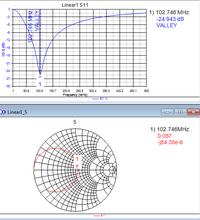chiques
Full Member level 3

- Joined
- Nov 21, 2007
- Messages
- 170
- Helped
- 2
- Reputation
- 4
- Reaction score
- 2
- Trophy points
- 1,298
- Location
- California
- Activity points
- 2,556
How can I measure the inductivity of an antenna operating at 2.45 GHz using a VNA?




